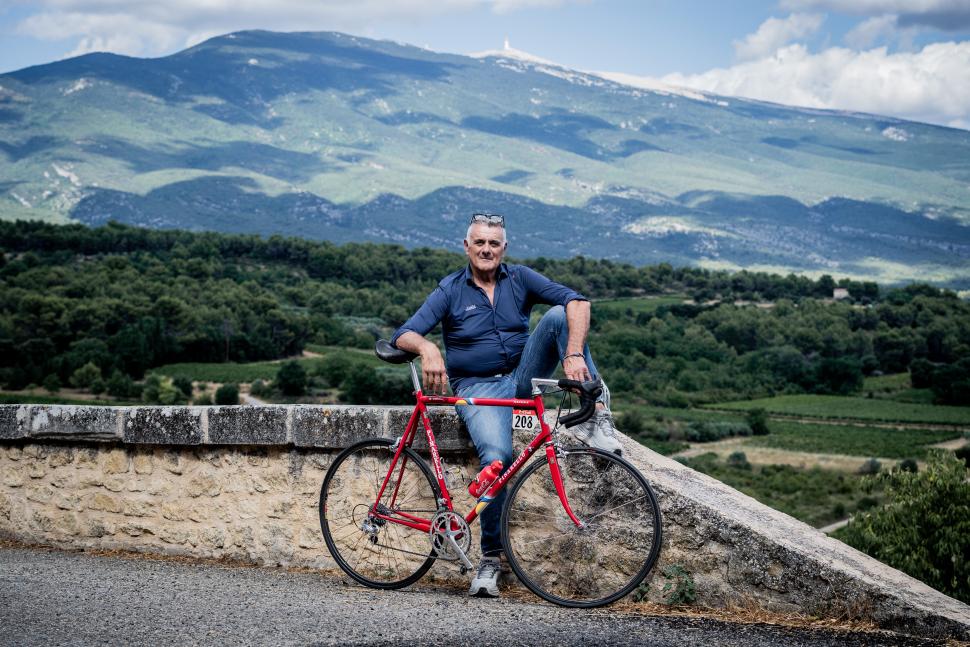On Tuesday afternoon, when the Tour de France finishes atop Mont Ventoux, the brutal, iconic climb known as the Giant of Provence, it is highly likely that the metaphorical giants of grand tour racing – Tadej Pogačar and Jonas Vinegegaard – will battle it out for supremacy on one of the sport’s most mythical ascents.
But back in 1994, it was a literal giant (or close enough, anyway) who tamed the slopes of the mighty Ventoux. Or, to put it more accurately, hauled all of his six-foot-four frame, slowly, agonisingly, over the iconic summit and down to the finish in Carpentras, etching his name into cycling folklore.
31 years ago, Eros Poli became arguably the least likely winner ever of a Tour de France stage featuring the Ventoux, when the tallest rider in the peloton held off a rampaging Marco Pantani on its fearsome slopes, through furnace-like 42-degree heat, to win stage 15 of the 1994 Tour de France.
In the 1990s, the era of Miguel Induráin, garish multi-coloured jerseys, and lightning-fast, unprecedented climbing performances, Poli was the lead-out man for sprint supremo Mario Cipollini at Mercatone Uno. More adept at barging shoulders during flat, fast sprints, Poli admitted that, once the Tour hit the high ground, he’d be the “first one crying”.
But, with Cipollini missing the 1994 Tour, Poli was given freedom to roam. He attacked relentlessly throughout the race, including in the Pyrenees to Luz Ardiden (proving he could race in the mountains when he felt like it), and ended up winning the overall combativity prize in Paris.
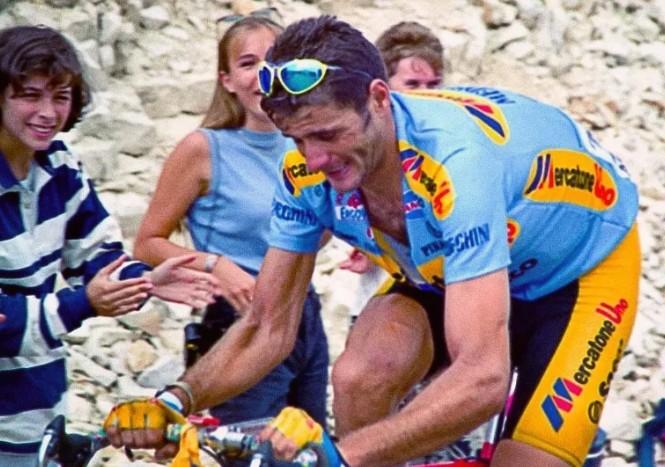 Eros Poli, Mont Ventoux, 1994 Tour de France (credit: PressSports)
Eros Poli, Mont Ventoux, 1994 Tour de France (credit: PressSports)
But on stage 15, he did the unthinkable. The morning after Roberto Baggio ballooned his penalty over the bar and Italy lost the World Cup final, Poli set off in the seemingly forlorn hope of some Italian redemption, attacking alone with 170km to go on the road to Carpentras.
The peloton, safe in the knowledge that Poli would be reeled in on the Ventoux, gave him plenty of rope. By the foot of the climb, in Bédoin, his lead was nudging 26 minutes. However, that’s where things got, unsurprisingly, tough.
On the steep corner at Saint-Estève, Poli’s pace slowed to single figures. “I thought I was going to die,” he said years later.
For the next 16km, the big Italian was travelling at half the speed of the group of favourites behind. His odds were lessened when the man of the moment, his compatriot Marco Pantani, who exploded onto the scene just a few weeks before at the Giro d’Italia, shot out of the GC group behind.
But Poli, against all odds, hung on. With one final big effort, he crested the summit with a four-and-a-half-minute gap over Pantani, and bombed down the other side, crossing the line 42 kilometres later in Carpentras with a bow, a final flourish to what journalist Bill Strickland has described as “one of the great exploits in cycling history”.
That exploit is now being immortalised in a new film, Grinta!, produced by Adjacent Lab Media, which is set to premiere on Wednesday 23 July, the day after the modern Tour peloton scales the Ventoux.
Reflecting on his biggest career moment 31 years on, Poli admits he had no idea at the time that he would even attack on the stage over the Ventoux.
“It had been very, very hot for a several days. Just the day before I got dropped on the first climb,” he says now.
“Plus, the night before was the World Cup final, so we stayed up watching, and there was no air conditioning in our room, so I really didn’t sleep very well. When I woke up that morning, my legs were really hurting. I just wanted to go back to sleep. To be honest, I had no plan to attack that day.
“I had already attacked on the stage to Futuroscope and on the stage to Luz Ardiden. Attacking on the stage to the Ventoux was just not in the plans. There were lots of attacks from the start, but the big teams were really controlling the race. But then the MG-Technogym team attacked just before the first feed zone. It was something they had been doing a lot that season, and it really made me mad.
“I was back in the cars getting water bottles for my teammates, and the pack was all strung out. It took me nearly 10 kilometres to make it back to the front of the peloton, and when I did, that’s when I decided to attack.
“There was barely any room to attack, and I made my move on the side of the road. I was even in the grass! I just rode all out. It was so hot, but I just kept going. For maybe 10 kilometres I had no water, and at first, I had only had about a one-minute gap but finally the pack sat up.”
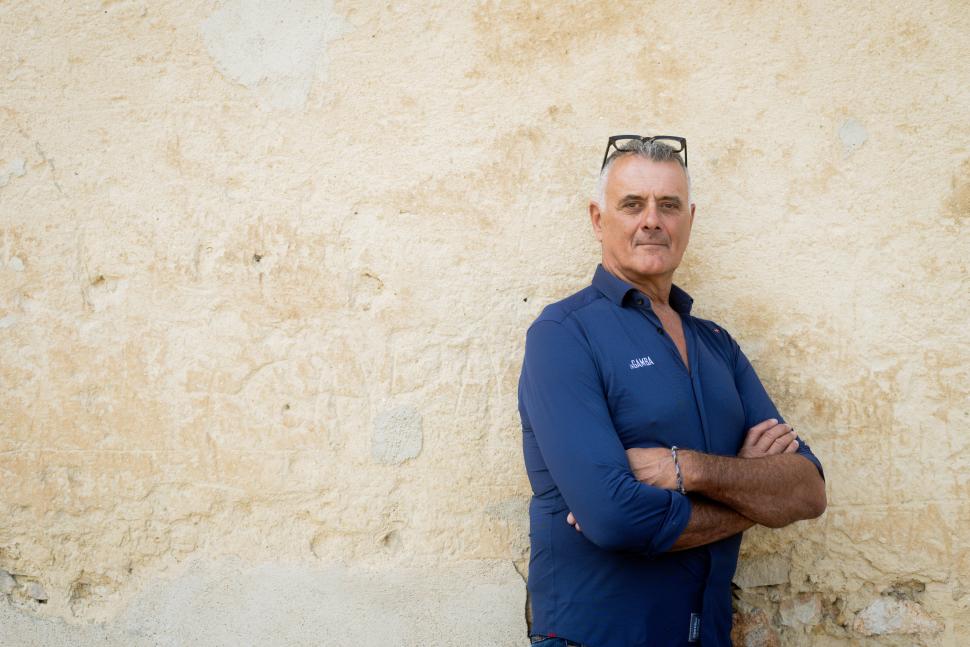 Eros Poli (credit: James Startt)
Eros Poli (credit: James Startt)
Even with over a quarter of an hour on the peloton at the foot of the climb, Poli refused to believe he had any chance of winning.
“The Ventoux is so long,” he says. “During the whole climb, I didn’t really think I had a chance of winning. But with my time gap, I just tried to climb ‘tranquil’. I remember after the hairpin turn at Saint-Estève, the climb really starts, and the average grade is around 12 per cent.
“My cadence descended to 50-60 pedal strokes per minute, and for the first time in my career I was going less than 10 kilometres per hour. I was so tired, and my legs hurt so much. I just kept singing James Brown’s ‘I Feel Good’, to forget about how I really felt, and I just tried to find my own rhythm on the climb.
“After Chalet Reynard, I was able to pick up my speed a bit, but I knew that Pantani was going to attack. At one point, about two kilometres from the summit, helicopters started flying overhead and I thought, ‘Fanculo! That’s Pantani’. But it wasn’t.
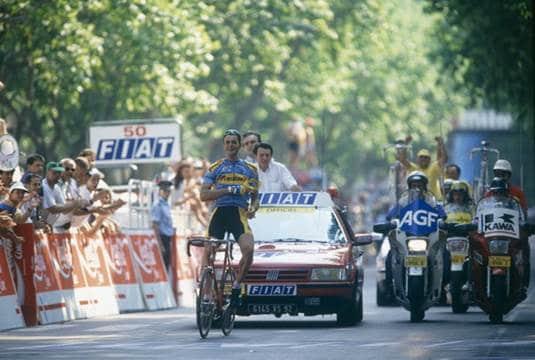 Eros Poli wins in Carpentras, 1994 Tour de France (credit: PressSports)
Eros Poli wins in Carpentras, 1994 Tour de France (credit: PressSports)
“And when I got to the top of the Mont Ventoux I still had four minutes 30 over Pantani and nearly six minutes over Indurain. That’s when I knew I was going to make it because, while climbing is difficult for me, when it comes to descending, there is no problem.
“I think I was the first to celebrate my victory with a bow. It wasn’t something I planned but I wanted to thank the public who had been super all day. They gave me such an ovation at the finish, and it just came out of me.
“The Tour de France is like a big theatre and on this day, for this moment, I had the leading role. It was such an honour. Never, did I think I would be the first over the Mont Ventoux. It was just formidable.”
And now, 31 years later, Poli still hasn’t fully got his head around that he’s the star of a new film exploring his legendary triumph on one of the sport’s most mythical climbs.
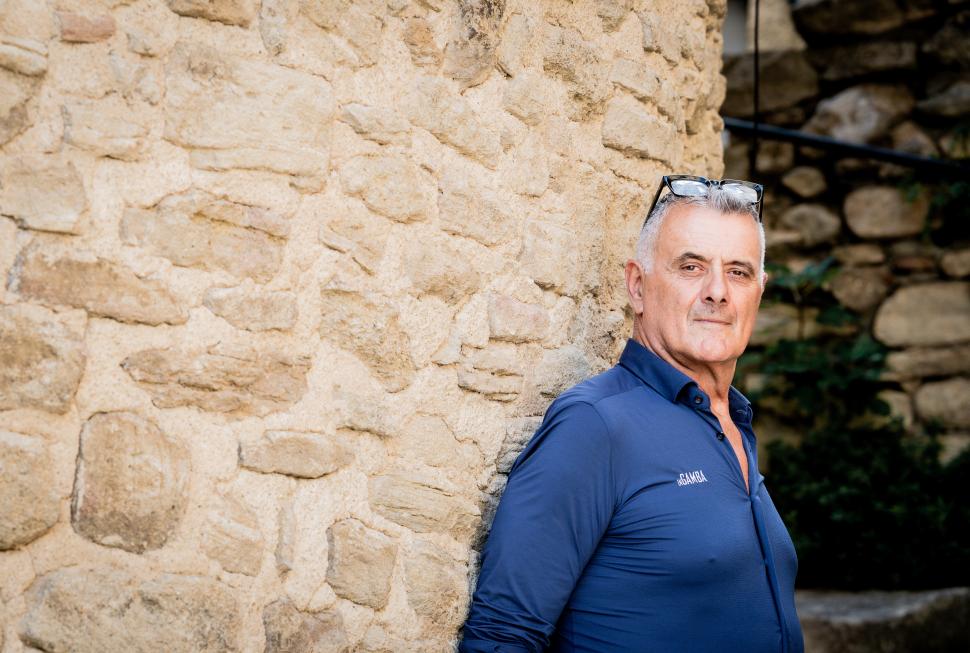 Eros Poli (credit: James Startt)
Eros Poli (credit: James Startt)
“I had been a domestique all my life and to suddenly be the centre of a film was something special,” he says. “It’s interesting because as a cyclist, I was used to being filmed when I was racing my bike. That was part of my job. But to be the subject of a film, to be an actor, no that was not something I was used to.
“I am not a star. I am not Miguel Indurain or Mark Cavendish. To be honest, I was a bit nervous. But it was fascinating and very satisfying. It was really touching. That moment in the film where, with four kilometres remaining, I understand that I was going to win, that moment where it really sinks in, well still, even rewatching it today, it is just so emotional.”

